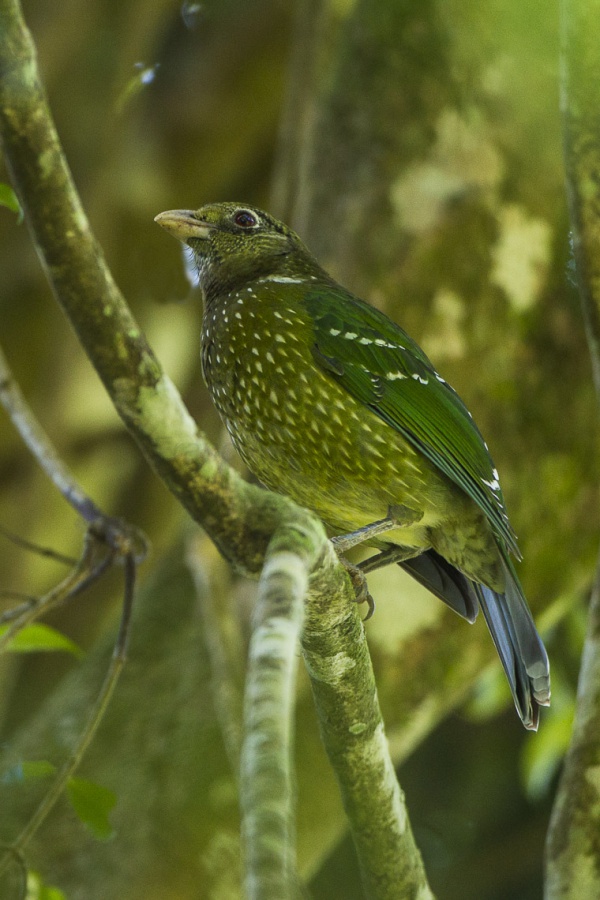Facts About Green catbird
The green catbird is a distinctive member of the bowerbird family found in the subtropical forests along Australia's east coast. One of its most remarkable characteristics is its unusual call, which can closely resemble a cat meowing or even a crying child. With their striking emerald green plumage accented with white spots, stout bills, and strong legs, these birds are truly captivating. Notably, both males and females appear similar, making it challenging to distinguish between the sexes. Their vocalizations range from short and sharp to long and quavering.
Green catbirds primarily inhabit subtropical and temperate rainforests, paperbark forests, and occasionally eucalypt forests. They typically occupy a home range of about five acres and prefer to breed in areas abundant with fig trees. Their breeding season spans from October to January, during which they construct large nests using sticks, leaves, and vine tendrils.
Unlike other bowerbirds, male green catbirds do not build elaborate structures to attract females. Instead, they clear small display areas to capture a female's attention. These birds are monogamous, meaning they form lifelong pair bonds, and the male is known to feed the female throughout the year. Breeding pairs also engage in duet calls, and a typical clutch consists of 2-3 eggs, which the female incubates for about 23-24 days.
When it comes to their diet, green catbirds are omnivorous, consuming a diverse array of fruits, buds, shoots, flowers, seeds, insects, and small vertebrates. They forage actively in trees, moving gracefully from branch to branch. While they are currently listed as Least Concern on the IUCN Red List, they are considered Vulnerable in New South Wales due to ongoing habitat destruction caused by forest clearing for development.
Socially, green catbirds are observed primarily in pairs or small groups. They are territorial, especially during the breeding season, and sometimes share feeding grounds with other species such as satin bowerbirds and fig birds. They dedicate much of their time to foraging and patrolling their territories. Despite being relatively common within their habitats, the persistent threat of habitat loss poses a significant risk to their future.
